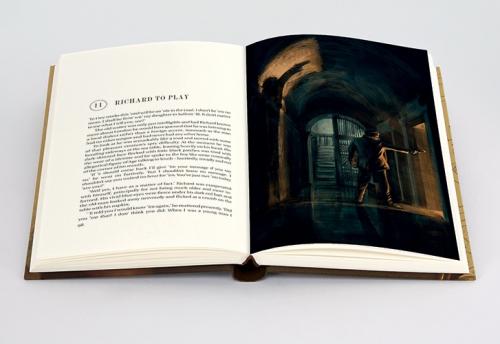This Folio Life: Getting the details right in Sharpe
Douglas Smith has created a series of action-packed illustrations for Sharpe’s Tiger that convey the drama and spirit of Bernard Cornwell’s novels. Much research was undertaken to ensure that the important period details are correct, and here the artist shows how he developed his artwork from roughs to finals.
Rob Davies, Editor

Bernard Cornwell’s Sharpe novels are of course thrilling reading, but lying beneath the action-packed plotting there is also an impressive historical intelligence at work. The author studied history at university and his training is evident in the books: they’re based on detailed research (for Sharpe’s Tiger this included a visit to Srirangapatna in southern India, where the action is set) and our roguish hero often finds himself tangled up in real-life events that make for an incredibly vivid backdrop. Cornwell is careful to explain in historical notes at the end of each novel which plot elements are the result of invention or educated guesswork.
For the Folio edition of Sharpe’s Tiger, and for the forthcoming books in the series, we knew how important it would be to be faithful to the author’s deep concern for accuracy. We’ve spent many hours researching each detail of the illustrations so that they’re as correct as can be. Much of this work happened during the UK’s first coronavirus lockdown and so most has been online by necessity, but we’re slowly building a library of military history and other reference books that will help us to ensure we’re faithful to the spirit and the letter of the novels.

We’ve also consulted historical prints and paintings from The British Library to get a sense of the architecture and the landscape of this part of India at the time; drawn on the advice of a curator at the National Army Museum for the different regimental uniforms; and looked very carefully at surviving examples of historical weaponry.
Douglas Smith’s wonderfully lively and dramatic illustrations for Sharpe’s Tiger capture the character and drama of the novels but do not betray the depth of his attention to detail, which has made working on the series a fascinating collaboration.
Douglas says, ‘It's been very exciting for me to begin illustrating the celebrated series of Sharpe novels. And, as a “cat person” as well as an artist, my favourite piece to work on for Sharpe’s Tiger was of course, Sharpe's terrifying encounter with the old, huge tiger.
‘Here you can see my initial small rough sketches for the scene – the first one was chosen by the Art Director and Editor, and I began to gather the references I'd need to create the final image.

‘This is just one of the many pages of downloaded pictures I referred to in order to enlarge and refine my pencil drawing.

‘Here is the resulting “tight pencil” sketch I submitted for approval, before the next stage of transferring it to scratchboard.

‘This is the scratchboard at an early stage of rendering, as the white line-work is scratched out of the solid black board, to create the finished piece.

‘And here's the finished illustration for the book. Altogether, from rough sketch to finished artwork, it was about a month's work.’

And take a look at the finished book below.





